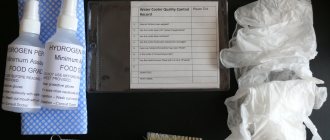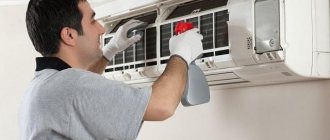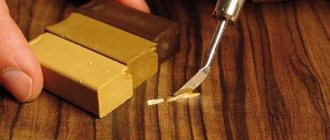Water is the source of life for almost every living organism on Earth, which is why it is so important to drink the established amount of clean liquid in order to maintain the necessary balance and health. Nowadays, we can note a craze for proper nutrition and proper care of one’s own body. Many people have stopped drinking low-quality water from the water supply; a healthy alternative is purified water from the cooler. However, few people think about how often it is necessary to clean the water cooler, because the purity of the liquid and the health of its consumer primarily depend on this.
This device is necessary not only for commercial enterprises, but also for residential premises, rooms, houses, apartments. The desire to buy a cooler is completely justified, because it is better to drink good and safe water from the manufacturer than to risk your own health and drink questionable liquid from the water supply system.
Why clean the cooler?
When used, the internal elements of the device are gradually contaminated, plaque appears, which ultimately affects the taste of the water and human well-being. Moreover, such an environment is fertile for the development of a variety of microorganisms and bacteria that lead to diseases. Cooler sanitation is necessary to keep the water clean. If this problem is not solved in time, it can lead to serious consequences: deterioration of health, poisoning. To begin with, we list the main factors that affect water pollution and increase the likelihood of developing diseases:
- Bacteria that thrive in a favorable environment (warm water) can penetrate into the device, which forms a harmful coating on individual components and elements of the device.
- One of the main functions of the cooler is to heat the water, so over time, scale forms on the surface of the heating device, which reduces the level of purity of the water.
- Bacteria may appear on the external elements of the device due to contact with people: germs on the tap, buttons, front panel, drip trays. After some time, harmful microorganisms enter the human body.
- Water purification is a complex process that requires special equipment, so not all suppliers take their responsibilities responsibly. Algae spores can get into the water, then the liquid begins to bloom and is harmful to health. Next, plant organisms settle on the inner surface of the entire system.
Removing stains
Getting rid of external contaminants on a device is not always easy - often the contaminants eat into the plastic and removing them causes difficulties. To remove dirt, you can use the following products:
- Dishwashing liquid - apply it to a clean, damp sponge, whip it into foam and wash the surface of the appliance. After completing the manipulations, the foam is washed off from the unit, and the entire surface is wiped with a dry, clean cloth. Remember that it is unacceptable to use hard sponges - they will scratch the plastic.
- If grease gets on the cooler, you can prepare a solution from dishwashing detergent, water and table vinegar , taken in equal proportions. The mixture is applied to a plastic surface, left for a few minutes and rinsed off thoroughly.
- Baking soda copes well with external dirt of varying degrees. It is diluted with water to a mushy state and carefully applied to the surface, after which it is washed off.
To increase the efficiency of cleaning activities, before applying the cleaning agent, the entire surface of the cooler should be wiped with a damp cloth.
How often to clean your device
This question worries many users of these devices. The device must be cleaned even after changing the water supplier. If the device has not been used for a long time, it is necessary to contact specialists to carry out sanitary work. When the cooler operates around the clock, the internal components should be treated regularly. In turn, manufacturers advise washing the internal structure at least once every six months. Many users note that it is better to carry out sanitary work every three months, in which case it is possible to reduce the likelihood of bacterial growth and health hazards.
If you plan to do the cleaning yourself, you may encounter certain difficulties. Before disassembling the device, you should unplug it from the outlet and allow time for the system to cool down.
Adviсe
- Before disassembling and lubricating the cooler, blow it out and clean it from dust.
- Remember the sequence of steps so that there are no problems during assembly. Take photos of each stage. Leave notes with a marker.
- When choosing a lubricant, consider its refractoriness and ability to create an oil film. Compare the characteristics of several lubricants and choose the best one. Read the latest reviews on specialized forums. The manufacturer can change the characteristics by updating the range.
- Clean and lubricate the fan regularly, otherwise it will fail and require replacement.
If you have read the article to the end and still have doubts about the need for this procedure, perhaps they are justified.
Only good, expensive coolers are worthy of washing and rebuilding. Sometimes it's better to buy a new fan if it costs less than your time. Source
Recommendations for cleansing and some contraindications
Professionals advise sanitizing the cooler once after thirty days of operation, despite the fact that the manufacturer’s recommendations indicate a completely different period (six months). However, we all wash dishes after each use, so why does such an important device for maintaining clean water need to be washed after such a long period of time? It is enough to disassemble the device to see for yourself that sanitary work has been needed for a long time. You will be able to find not only scale, but also green vegetation on the internal nodes. Regular flushing will significantly increase the purity of the fluid and increase the operating time of the equipment.
Before you learn how to clean a water cooler, you should learn some of the nuances of the work that will allow you to avoid the most common mistakes. There is no need to wash machine parts under running tap water, as such actions will not bring the desired result, because it is best not to think about the quality and purity of such a liquid. Steam cleaning devices and dishwashers are also not suitable for solving this problem.
Cooling using Peltier elements
The use of these parts to assemble a homemade air conditioner is a controversial issue. It's all about the energy consumption of Peltier elements (otherwise known as thermoelectric converters), which is incomparable with the amount of cold produced. Outwardly, they look like plates with 2 wires; when electricity is connected, one surface of the element generates heat, and the other - cold.
What do home craftsmen and car enthusiasts who strive for comfort do:
- Buy from 4 to 8 Peltier elements and mount them with the “hot” side on a ribbed aluminum radiator.
- This radiator is installed in such a way that it is cooled by street air.
- A cooler from the computer is attached to the “cold” side of the converters so that it supplies room air to the plate.
Peltier elements actually cool the air flow, but at the same time they simply consume electricity. After all, half of the energy is wasted because it is converted into heat and dissipated in the atmosphere. That is, for every Watt of electricity expended you will receive no more than 0.5 W of cold, while with a split system this ratio is completely different – 1:3. You can see how this works in practice in the next video:
Detailed cleaning instructions
There are several basic methods for cleaning a cooler; we list the main stages of sanitary work. This method is perfect in a situation where the water has not yet been heavily polluted. Cleaning a water cooler at home is quite simple; you just need to fulfill a few conditions. The most convenient time for professional cleansing is when the liquid runs out. Next, you need to turn off the device and give it time to cool down so as not to get burned when cleaning. Remember that you cannot turn on the device again while you are doing maintenance, otherwise you may damage the heater. Cleaning a water cooler yourself is easy and won't make you sweat at all, you just need to follow the instructions.
Preparatory work
You need to open up the product you usually use to clean dishes and mix it with water to clean the body of the appliance. It would also be a good idea to purchase citric acid; it will cope well with microorganisms and “centuries-old” plaque.
External surface cleaning
Disinfect your hands with an antiseptic, which can be alcohol, good soap, or simply wear medical gloves. Wipe the surface of the machine thoroughly with a damp cloth; it can be pre-soaked in dishwashing solution. Pay special attention to the grille and the back of the device, you need to remove all traces of dust. After this, you should go over the body again with a dry towel. External washing is of great importance, as it eliminates bacteria that subsequently enter the machine.
How to wash the inside
To do this, use a prepared mixture of citric acid and water in a ratio of 100 g of product per 5 liters of liquid. If you are wondering: how to clean a fan? – then there is nothing complicated, you need to thoroughly wipe it from dust. Next you need to disassemble and clean the cooler.
Cleaning, disinfection
To perform internal disinfection, unscrew the bottle receptacle counterclockwise. Pour the diluted mixture inside the device so that it fills the receiving tank. Be careful: the liquid must completely fill the tank. To do this, you need to open the taps and monitor the thickness of the jet, which should be the same as during normal operation of the cooler. If the water flow is weak, then you need to add detergent to the tank.
Scale
The method described above, that is, a solution of citric acid, will not only destroy bacteria and algae, but also rid the device of scale. To effectively remove the deposits that have formed, you should plug the device into a power outlet and wait until the water heats up. Then turn off the cooler and drain the water after five hours. How to wash the device? Quite simple: pour clean water and repeat heating, release the first batch and enjoy using it.
If you haven’t washed the cooler for a long time and the water coming from the taps is very dirty, then the cleaning process becomes much more complicated. In this case, it is necessary to use special chemicals that can be found in specialized retail outlets.
Cleaning removable parts
After you have managed to wash the device from the inside, you should move on to cleaning the removable parts. Remove the drip tray and taps and rinse them thoroughly. Don't be afraid to use a brush and dishwashing chemicals. After the procedure, you should wipe these elements dry and put the parts back in place. If you find it difficult to remember the location of the devices, make a note with a marker.
Rinsing
Rinse the container and equipment from the mixture or special compositions purchased in the store and intended for cleaning, fill with clean water. If you feel a sour taste, you need to repeat the procedure several more times.
What is recommended to use
- Soft cloth napkins, brushes.
- Detergent gels intended for washing dishes.
- Plastic tubes are treated with a 2% solution of baking soda, soaking them by immersion for 20 minutes, followed by rinsing.
- The internal cavities of the electrical appliance system are cleaned with a solution of citric acid.
Cleaning the water cooler yourself is not at all difficult. This procedure should not be neglected. Regular cleaning of the device is the key to drinking safe drinking water.
Another method of washing an electrical appliance will be shown in the video below.
What actions to take if the water in the cooler has bloomed?
In this case, you need to take the following actions:
- Disassemble the device.
- Carefully treat all internal elements with cooler cleaning products.
- It would also be a good idea to disinfect the bottle and liquid supply system.
- Thoroughly wash all removable elements with a brush.
- Fill with fresh water and attach all parts. Wear medical gloves.
Isn't it better to turn to specialists?
Cleaning a cooler yourself without special skills can be difficult and not always effective. Firstly, you may not clean the connecting pipes and internal tanks properly
Secondly, carelessness can damage the internal parts of the device. As a result, the cooler will leak or cool the liquid poorly.
Thirdly, some cooler models are assembled in such a way that it is impossible to open them at home without damaging the structural parts.
Therefore, it is better to realistically assess your strengths and decide whether you can do the cleaning yourself. The best option is to call service specialists.
When is professional cleaning necessary?
If the water coming from the tap has bloomed, then it is better to contact highly qualified employees who will perform all the necessary work to clean the cooler. Such companies use modern equipment and high-quality cleaning products. After receiving the device, wash its outer casing and pour a liter of water.
Why is it noisy after cleaning?
All devices make noise. But if the cooler makes too much noise after cleaning, then it’s worth checking whether you assembled the “machine” correctly.
Note! When assembling the cooler, there should be no extra parts or bolts left.
Check some places that may be making noise:
| Installation of the device | Technical components |
| It must stand on a flat surface | Check the fan. Perhaps the situation will be corrected by lubricating it |
| Should not touch the wall or other objects | Inspect the disassembly site. Is there a freon leak? |
| Tighten all the bolts that are on it well | Check the connection of the purifier to the water supply |
If you have not identified any serious problems and the noise does not stop, contact a service center.
Prevention
The main reason for device contamination is the users themselves, who introduce bacteria onto the device body. It is enough to place a container of water into the cooler once with dirty hands, and bacteria and microbes get inside and begin to actively multiply. Foreign microorganisms not only worsen the taste of the liquid, but also make it unsafe for health. These changes are often unnoticeable in hot water, so focus on liquid at a low temperature. As the best preventative measure, you can periodically clean the exterior of the housing (once a month). Pay special attention to those parts that come into direct contact with water. If the water has already bloomed, then it is better to call upon the help of specialists who will return the device to its original characteristics. The presented company operates in Moscow.
Causes of water pollution
The first source of pollution may be the water itself. In fact, this is why it is recommended to buy it only from trusted suppliers. The second most common cause is dirt and bacteria on the hands. If the neck of the bottle can still be protected with a protective film, then the entry of microorganisms inside during its installation is inevitable. All this leads to their intensive reproduction, up to the appearance of colonies already inside the device - a characteristic coating is formed on the surface and, as a result, the cooler needs to be cleaned.
Any cooler requires timely care, washing and cleaning.
In addition, deterioration in water quality can be caused by the following factors:
- Lack of personal hygiene. No one can guarantee that all household members or office employees scrupulously adhere to basic sanitary rules!
- Unfavorable external environment. Dust in the room, lint from floor coverings, small particles contained on outerwear - all this sooner or later ends up inside the dispenser.
- Small insects and rodents. It sounds shocking, but it is a fact. Many public institutions where such devices are installed are at risk of spreading infections precisely due to the local “fauna”.
- Scale formation. This may indirectly cause the cooling fan to break down.
Mineral salts present in water contribute to the formation of plaque and scale.
Professional washing: what is included in the service, duration and cost
- The thermostat is set to minimum mode. In this case, it is necessary to adjust the indicators and the device will cool as it should.
- Perhaps, as in the previous case, the power of the unit is simply not enough for a large volume of liquid and you need to let the device stand for several minutes.
- Another reason could be a lack of rear surface ventilation. It is important that the gap between the device and the wall is at least 15-20 cm. Also, the device should be located away from heating elements and out of direct sunlight.
- Overheating of the system can cause insufficient cooling. In this case, the device must be disconnected from the network and left for 30 minutes.
Professional treatment is carried out in a special workshop - this gives a better result than home cleaning. The service includes:
Types of dispensers
Taking into account the principle of operation, equipment and size, coolers are divided into several types, each of which is suitable for use in different conditions. Models are available that supply only cold water, cold and hot, and models with liquid at room temperature. According to their design and operating principle, they are divided into:
- Floor-standing. Free-standing cabinets with a height of 80 cm or more have different designs. The model can be supplied with a bottom or top loading bottle. Floor-standing devices are characterized by high performance and functionality. They are used when chilled or hot water is needed and can operate at high speeds, which is why they are often installed in large companies.
- Tabletop. They are compact in size and have low liquid consumption, suitable for home or small offices. They are installed on the windowsill, kitchen table or countertop, as well as other surfaces. They often operate on the electronic cooling principle and do not waste a lot of electricity.
- With storage space. An additional cabinet can store dishes, cups and food. A number of models have an ozonizer in the cabinet. Ozone disinfects the surface and kills harmful microorganisms.
- With a refrigerator. The built-in chamber allows you to effectively use every part of the cooler. The compressor cooling system regularly maintains the desired temperature. Premium devices have LCD displays that display all the set parameters. A cooler with a refrigerator will be useful in the office.
- Built-in. The model saves space in the room. It can be installed in kitchen units, as well as in cabinets with a special niche. The dispenser is connected to the bottle installed behind the wall using a flexible hose. This system makes it possible to harmoniously fit the equipment into the interior.
- Flow-through. The dispenser does not need to be regularly maintained and the bottle changed. Thanks to the direct connection to the water supply, water enters the system automatically. To prevent contamination of the device and the entry of debris into the drink, the cooler has several filter elements. Therefore, it requires periodic maintenance and cleaning.
- With carbonation. The device has cylinders of carbon dioxide, which is mixed with liquid. This option is suitable for people who prefer sparkling water to regular water. The volume of the container is enough for 1000 servings.











